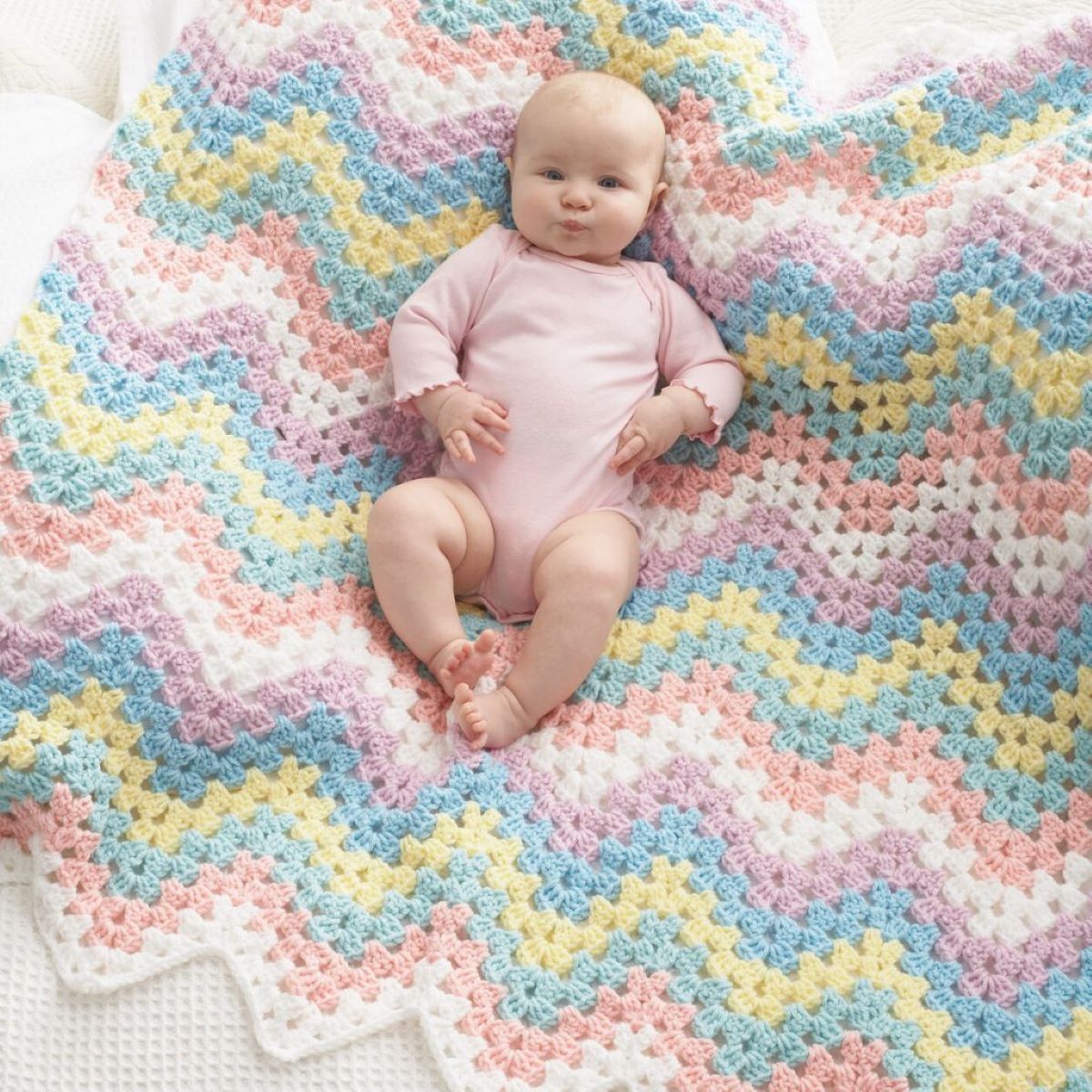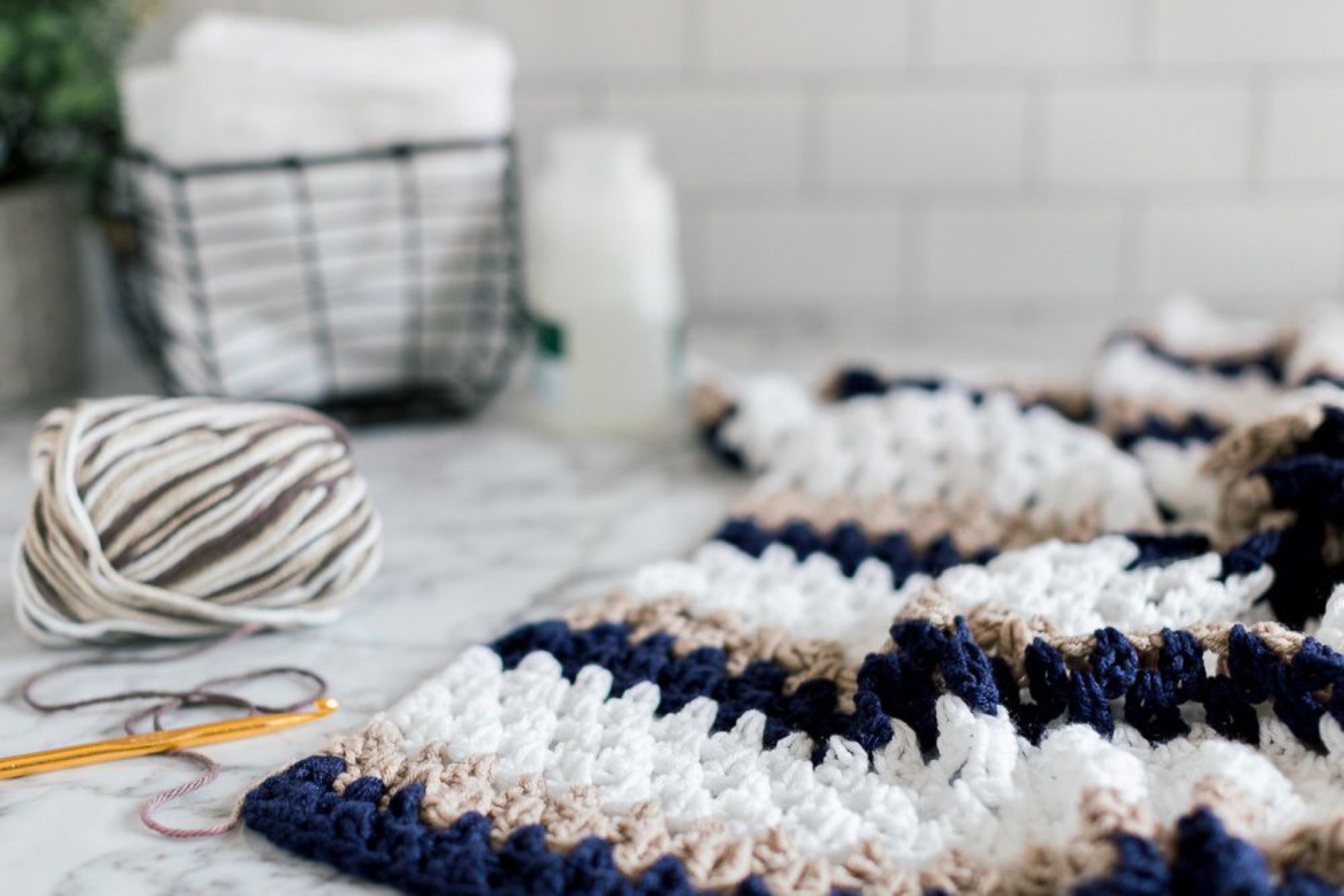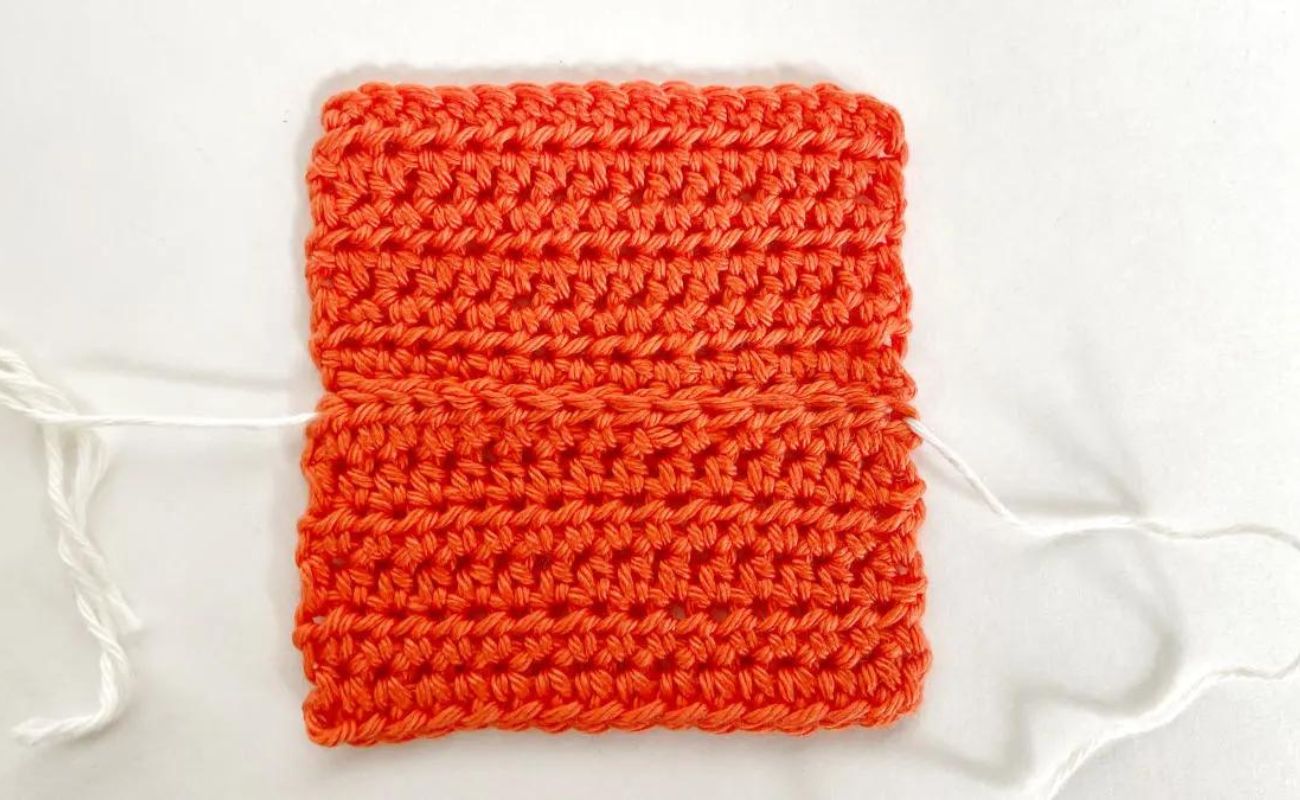

Articles
How Many Stitches To Cast On For A Blanket
Modified: November 1, 2024
Discover the perfect stitch count for your cozy blanket in our helpful articles. Learn how many stitches to cast on for various blanket sizes and designs.
(Many of the links in this article redirect to a specific reviewed product. Your purchase of these products through affiliate links helps to generate commission for Storables.com, at no extra cost. Learn more)
Introduction
When it comes to knitting a blanket, one of the most important decisions you’ll need to make is how many stitches to cast on. The number of stitches will determine the width of your blanket and will ultimately impact its overall size. Getting this calculation right is essential to ensure that the blanket turns out exactly the way you envision it.
In this article, we will walk you through the process of determining the number of stitches to cast on for a blanket. We’ll discuss various factors to consider, including the desired size of the blanket, the type of yarn and needle size you plan to use, and how to swatch for gauge. By the end, you’ll have all the tools and knowledge you need to confidently start casting on for your blanket project.
So, whether you’re a novice knitter or a seasoned pro, let’s dive in and discover the secrets to choosing the perfect number of stitches for your blanket!
Key Takeaways:
- Determine the size, yarn weight, and needle size to calculate the perfect number of stitches for your blanket. Swatch for gauge and consider pattern adjustments for a customized and cozy creation.
- Keep a swatch library, consider yarn characteristics, and embrace creativity with color changes and joining techniques. Don’t be afraid to frog and enjoy the process of knitting your unique, handmade masterpiece.
Read more: What Crochet Stitch Is Best For A Blanket?
Determining the Size of the Blanket
The first step in determining how many stitches to cast on for your blanket is to determine the desired size of the finished product. Consider who the blanket is for and how it will be used. Will it be a throw blanket for a couch? A baby blanket? Or maybe a luxurious king-size blanket for your bed?
Once you have a clear idea of the intended size, you can start calculating the width and length in inches or centimeters. Keep in mind that the width of the blanket is usually measured from side to side, while the length is measured from top to bottom.
For example, let’s say you want to knit a standard throw blanket for your living room. A typical throw blanket measures around 50 inches in width and 60 inches in length. These measurements will serve as our reference point for the rest of the calculation process.
Remember that these sizes are just suggestions, and you can customize your blanket to fit your preferences and needs. Whether you want a smaller lap blanket or a larger bedspread, the process of determining the size remains the same.
Now that we have established the size of our desired blanket, it’s time to move on to the next step: considering the factors that will influence the number of stitches to cast on.
Factors to Consider
When determining the number of stitches to cast on for a blanket, there are several factors to consider. These factors will help you ensure that your blanket turns out the right size and meets your expectations. Let’s take a look at some key factors to keep in mind:
- Yarn Weight: The weight or thickness of the yarn you choose will affect the overall size and drape of the blanket. Bulkier yarn will create a larger and thicker blanket, while finer yarn will result in a lighter and more delicate blanket.
- Needle Size: The size of your knitting needles will also influence the size of your stitches and ultimately, the size of your blanket. Larger needles will create larger stitches, while smaller needles will produce smaller stitches.
- Tension and Gauge: Your knitting tension, or how tightly or loosely you knit, will impact the width and height of your stitches. It’s crucial to swatch for gauge to determine how many stitches and rows per inch you are achieving, as this will help you calculate the number of stitches needed for your desired blanket size.
- Pattern or Stitch Design: If you plan to incorporate a specific stitch pattern or design into your blanket, you need to consider how it will affect the gauge and overall size. Some stitch patterns may naturally be more stretchy or dense, which can impact the finished dimensions of your blanket.
By taking these factors into account, you can make informed decisions about the yarn weight, needle size, and stitch pattern to achieve the desired size and appearance for your blanket project. Now that we’ve discussed the factors, let’s explore how to choose the right yarn and needle size for your project.
Choosing the Right Yarn and Needle Size
Choosing the right yarn and needle size is crucial when it comes to achieving the desired size and appearance of your blanket. The yarn and needle size you select should complement each other and work in harmony to create a fabric with the desired characteristics.
When it comes to yarn, consider the weight or thickness of the yarn you want to use. Yarn weights are typically categorized from super fine to super bulky, with each weight resulting in a different fabric density and drape. For a larger blanket, you may want to opt for a heavier weight yarn, while a lighter weight yarn would be more suitable for a smaller blanket.
Additionally, pay attention to the recommended gauge provided on the yarn label. The gauge indicates the number of stitches and rows that should be achieved over a specific measurement, typically given as a 4-inch square. This information is crucial to determine the appropriate needle size and ensure that your stitch count is accurate.
Speaking of needle size, it’s important to consider the type of fabric you want to create. If you desire a tight and dense fabric, you may want to choose smaller needles. On the other hand, if you’re aiming for a looser and more open fabric, larger needles would be the way to go.
Experimenting with different yarns and needle sizes can help you find the perfect combination for your blanket project. Create some swatches using different yarns and needle sizes to see how they affect the stitch pattern, fabric density, and overall size. This will give you a better understanding of how each component contributes to the final product.
Now that you have chosen the right yarn and needle size, the next step is to determine your gauge by swatching. Let’s dive into the importance of swatching and how it can help you calculate the number of stitches needed for your blanket.
When casting on stitches for a blanket, consider the desired width and the weight of your yarn. A good starting point is to cast on 150 stitches for a twin size blanket, 180 for a full size, and 200 for a queen size. Adjust based on your specific project and gauge.
Swatching for Gauge
Swatching for gauge is a crucial step in the knitting process, especially when it comes to determining the number of stitches to cast on for your blanket. Gauge refers to the number of stitches and rows that you achieve within a given measurement, typically a 4-inch square.
Swatching involves knitting a small sample square using your chosen yarn and needle size. It’s important to mimic the stitch pattern and knitting tension that you plan to use for your blanket. By measuring your swatch and comparing it to the recommended gauge, you can determine if your stitch count is on track or if adjustments need to be made.
To create a gauge swatch, cast on a sufficient number of stitches (e.g., 30 to 40 stitches) and knit in your desired stitch pattern for a few inches. Be sure to keep the tension consistent throughout the swatch. Once you’ve completed the swatch, gently wash and block it according to the yarn’s instructions.
Measure your swatch using a ruler or a measuring tape. Count the number of stitches horizontally, vertically, and in a 4-inch square. Compare these measurements to the recommended gauge stated on the yarn label or the pattern you’re following.
If your stitch count matches the recommended gauge, great! You can proceed with confidence, knowing that your stitches will result in the desired size. However, if your gauge differs from the recommended gauge, some adjustments may be necessary.
If your stitches are too small or tight, consider using larger needles to achieve a looser tension. Conversely, if your stitches are too large or loose, switch to smaller needles to create a tighter tension. Repeat the swatching process with the adjusted needle size until you achieve the desired gauge.
Once you have determined your gauge, you are ready to calculate the number of stitches to cast on for your blanket. Let’s explore the process in detail.
Calculating the Number of Stitches to Cast On
Now that you have determined your gauge, you can proceed to calculate the number of stitches to cast on for your blanket. This step requires some basic math, but don’t worry – it’s quite straightforward!
First, you’ll need to decide on the desired width of your blanket in inches. Let’s continue with our example of a throw blanket measuring 50 inches in width. Next, you’ll multiply this width measurement by your gauge per inch.
For instance, if your gauge is 4 stitches per inch, that means you’ll need to cast on (50 inches x 4 stitches per inch) 200 stitches. This calculation provides you with a starting point for the number of stitches to cast on.
Keep in mind that this is a general estimate, and your blanket pattern or stitch pattern may require some adjustments. If your stitch pattern has a pattern repeat that does not evenly divide into the total number of stitches, you may need to make some modifications to accommodate the pattern.
Additionally, it’s a good idea to add some extra stitches as border stitches or selvage stitches to ensure a clean and polished edge. These additional stitches can be slipped or worked in a simple knit or purl pattern to create a neat border.
Remember to consider the desired drape of your blanket as well. If you prefer a more loose and drapey fabric, you may want to add a few extra stitches to give the blanket a bit more ease.
Lastly, consider the length of your blanket. If you’re working with a stitch pattern that has a vertical repeat, make sure to calculate the number of pattern repeats needed to achieve the desired length. Multiply the length of your blanket by the number of pattern repeats per inch to determine the total number of rows needed.
By following these steps and making any necessary adjustments, you can confidently calculate the number of stitches to cast on for your blanket project.
Now that we’ve covered the essential steps for calculating the number of stitches to cast on, let’s explore some bonus tips and tricks to help you along the way.
Bonus Tips and Tricks
As you embark on your blanket knitting journey, here are some bonus tips and tricks to keep in mind:
- Create a Swatch Library: Keep a collection of your swatches, noting the yarn, needle size, and stitch pattern used. This library will serve as a handy reference for future projects and can help you compare gauges and stitch patterns.
- Consider the Yarn’s Characteristics: Different yarn fibers and finishes can impact the drape, durability, and appearance of your blanket. Read up on the yarn’s properties and consider how they align with your desired outcome.
- Block Your Blanket: After completing your blanket, block it to even out the stitches and create a polished finish. This step can make a significant difference in the overall appearance of your work.
- Use Stitch Markers: To make it easier to keep track of pattern repeats or changes in stitch pattern, use stitch markers to mark specific points in your work.
- Consider Color Changes: If you plan to incorporate multiple colors in your blanket, think about how you want the color changes to occur. You can create stripes, gradient effects, or even explore colorwork techniques for added visual interest.
- Joining Techniques: Depending on the size of your blanket, you may need to join multiple panels together. Research and practice different joining techniques to ensure a seamless and secure finish.
- Don’t be Afraid to Frog: If you’re not happy with your progress or notice a mistake, don’t hesitate to undo your work (commonly known as “frogging”) and start again. It’s better to take the time to fix it rather than settling for something you’re not satisfied with.
By keeping these tips and tricks in mind, you’ll be well-equipped to tackle any challenges that may arise during your blanket knitting journey.
Now, armed with all this knowledge, you’re ready to cast on and begin knitting your beautiful blanket. Enjoy the process, embrace your creativity, and soon enough, you’ll have a cozy, handmade masterpiece to cherish for years to come.
Happy knitting!
Conclusion
Knitting a blanket is a rewarding and fulfilling project that allows you to create a cozy and cherished item. One of the key aspects of knitting a blanket is determining the number of stitches to cast on, which ultimately determines the size and overall appearance of the finished product.
In this article, we explored the process of calculating the number of stitches to cast on for your blanket. We discussed the importance of determining the size of the blanket, considering factors such as yarn weight and needle size, swatching for gauge, and making adjustments as needed.
We also provided some bonus tips and tricks, such as creating a swatch library, considering the yarn’s characteristics, and using stitch markers effectively.
Remember, each blanket project is unique, and it’s essential to adapt the calculations and techniques to fit your specific requirements. Customizing your blanket to your preferences and needs will ensure that your final creation is a perfect reflection of your creativity and craftsmanship.
So, whether you’re knitting a small baby blanket or a large throw for your favorite chair, take the time to plan and calculate the number of stitches to cast on. This thoughtful approach will result in a blanket that fits perfectly and brings you joy every time you snuggle up in it.
Now, grab your yarn, needles, and inspiration, and let your knitting journey begin. Enjoy the process, explore different techniques, and most importantly, have fun as you bring your blanket to life stitch by stitch.
Happy knitting!
Now that you've got the hang of casting on stitches for your next cozy blanket, why not dive into some festive crafting? Our upcoming guide on Easter craft ideas offers a bounty of inspiration for elegant DIY projects that are perfect for spring. Whether you're looking to spruce up your space or craft unique gifts, these DIY crafts will surely spark your creativity and provide hours of enjoyable crafting.
Frequently Asked Questions about How Many Stitches To Cast On For A Blanket
Was this page helpful?
At Storables.com, we guarantee accurate and reliable information. Our content, validated by Expert Board Contributors, is crafted following stringent Editorial Policies. We're committed to providing you with well-researched, expert-backed insights for all your informational needs.














